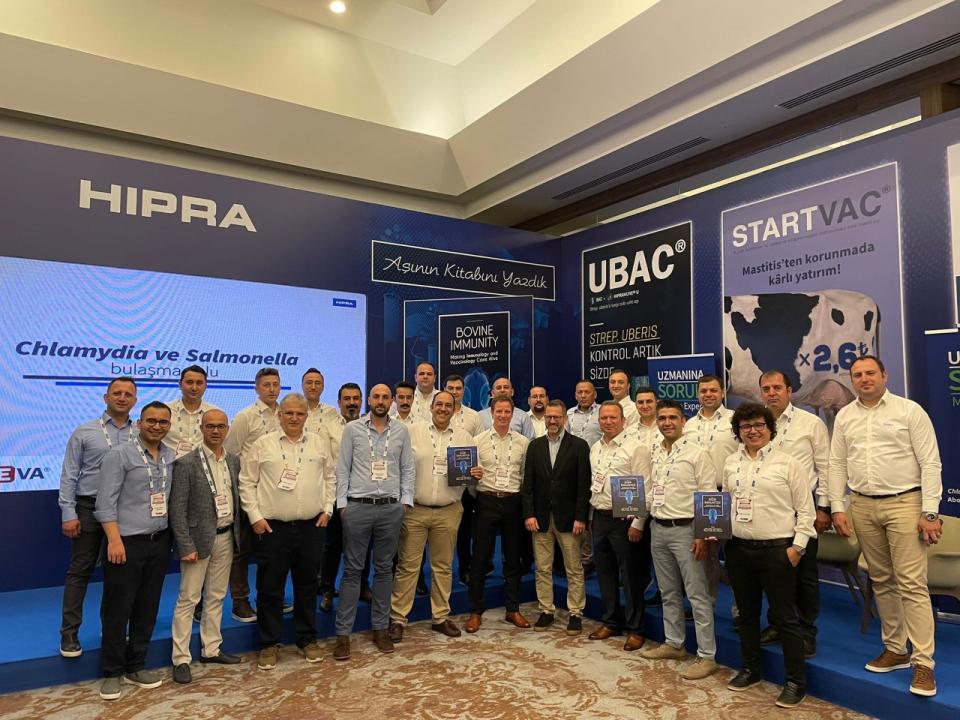These conferences were arranged in three different locations over the country (on the 22nd in Catalonia, on the 23rd in Asturias and on the 24th in Córdoba), with around 120 cattle veterinarians attending.
At the end of the conference at each location, HIPRA organized a lunch for the attendees which provided a good opportunity to discuss the IBR situation in more depth with the speakers.
For these three sessions HIPRA brought in one of the most important experts on IBR in Europe, Professor Etienne Thiry from Liège University, who presented the challenges of IBR and prospects for the future, focussing on twice-yearly vaccination protocols as an efficacious way to control IBR.
The professor also explained the current IBR epidemiology situation in Europe in terms of control programmes and discussed the Belgian situation in greater depth.
After the professor’s lectures in Catalonia, Anna Jubert, manager of ALLIC [Catalan Interprofessional Dairy Association Laboratory], presented a study of IBR epidemiology in the area. Manuel Morales, veterinarian from OCEVA [specialist veterinary service] in Asturias, described an outbreak on a dairy farm, whilst Joan Pineda, veterinary specialist in cattle diseases, described the impact of an outbreak on beef herds in Córdoba.
The third part of these sessions was focused on understanding the surveillance plan that the ministry published some months ago. For this part, HIPRA invited people from the regional and national governments.
In Catalonia, Mercè Soler, animal health veterinarian from the regional government, explained the current programme for preventing Infectious Bovine Rhinotracheitis in the area and the future prospects with the changes in legislation.
In Asturias, Tania Rubio from the regional government introduced the IBR surveillance plan for this area in 2019.
To conclude the conferences in Córdoba, Luis José Romero Gonzalez, from the Ministry of Agriculture with responsibility for the epidemiology of IBR disease, explained the new IBR situation from 2019 in Spain, the main reasons for the changes in legislation and the future prospects for the IBR situation.
For now, only a surveillance plan will be undertaken, but if the cattle industry is ready and agrees, an eradication programme could be possible in the near future.








